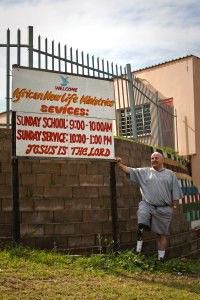
After several years of working in remote tribal villages, it became obvious there was an absence of men. The newly planted churches consisted primarily of women. This is because the young Xhosa men typically travel to the cities to work in the factories or in the mines in order to earn enough money to return to the Transkei to buy a wife. But after getting a job and becoming consumers, the men are reluctant to return to their homelands. They remain in the black “townships” (shacktowns or squatter camps) of South Africa, and they make annual visits to their homeland—and their wives. During these visits, rather than going to church, which they view as an activity for women, they choose to drink.
In a male-dominated culture, however, it is critical to reach the men. So, in 1990, the mission decided to begin outreaches to these westernized Xhosa men, who were living in the townships and gainfully employed. Many wore Western clothes. They had shoes, watches, and jobs, and they also could read their own language. Consequently, ministering to them was significantly different from ministering to the Xhosa in the rural villages.
As a result of these outreaches, a new ministry called African New Life Ministries (ANLM) was soon developed that focused on reaching Xhosa men living in the squatter camps.
Over the last few decades, ANLM has planted many churches throughout the townships of southern Africa. The main mission center for ANLM is located in Msobomvu, Transkei. In addition to its ministry in the black squatter camps, ANLM has begun to establish churches in the Xhosa homelands.
